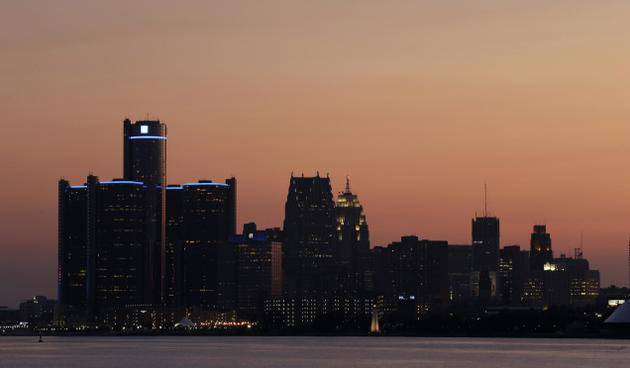
Detroit became the biggest U.S. city to file for bankruptcy on Thursday, its finances ravaged and its neighbourhoods hollowed out by a long, slow decline in population and auto manufacturing that once made it the very symbol of American industrial might.
The federal bankruptcy court filing, which had been feared for months, conserves cash so the city can operate but it will hurt Detroit’s image for years. It could mean laying off municipal employees, selling off assets, raising fees and scaling back basic services such as trash collection and snow ploughing, which have already been slashed.
Kevin Orr, a bankruptcy expert hired by the State in March to stop Detroit’s fiscal free-fall, chose bankruptcy over diverting money from police, fire and other services to make debt payments. He made the filing in federal bankruptcy court under Chapter 9, the bankruptcy system for cities and counties.
Mr. Orr said Detroit would continue paying its bills and employees.
But, said Michael Sweet, a bankruptcy attorney in Fox-Rothschild’s San Francisco office, “They don’t have to pay anyone they don’t want to. And no one can sue them.”
It took decades of decay to bring down the industrial giant that put the world on wheels.
RISE AND FALL
The city grew to 1.8 million people in the 1950s, luring them with plentiful jobs and paid good wages to stamp out automobile for sale across the globe. But like many American cities, Detroit’s fall began late that decade as developers started building suburbs.
At the same time, auto companies began opening plants in other cities, and the rise of autos imported from Japan started to cut the size of the U.S. auto industry. Detroit’s property values fell, tax revenue dropped, police couldn’t control a growing murder rate, and many middle-class blacks fled the city for safer suburbs with better schools.
Detroit lost a quarter-million residents between 2000 and 2010. Today it’s barely above 700,000. Much of the middle-class and scores of businesses also have fled the city, taking their tax dollars with them.
The city is littered with abandoned factories built in the post-war boom years, most of which have multiple floors. As the Japanese auto invasion began cutting into Detroit’s sales, General Motors, Chrysler, Ford and hundreds of auto parts companies looked outside the city to build one-storey plants that could handle modern assembly lines.
By the time the auto industry melted down in 2009, along with the economy as a whole, only a few factories from GM and Chrysler were left. GM is the only one with headquarters in Detroit.
No comments:
Post a Comment